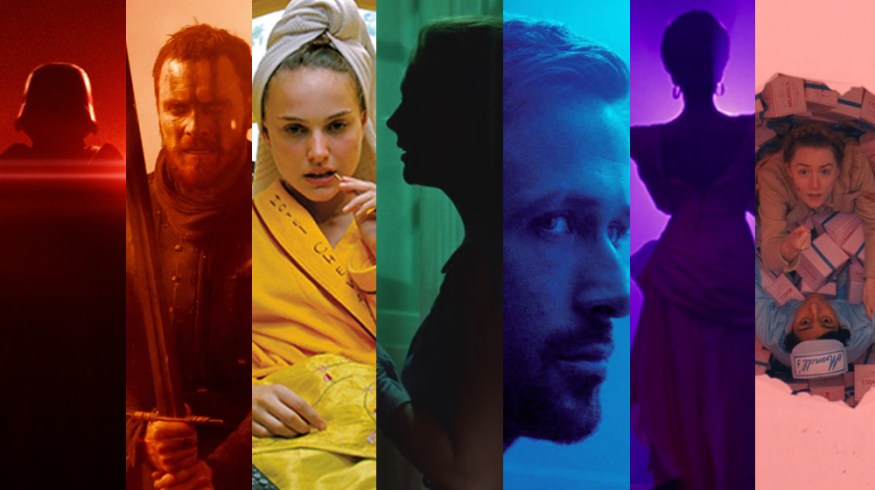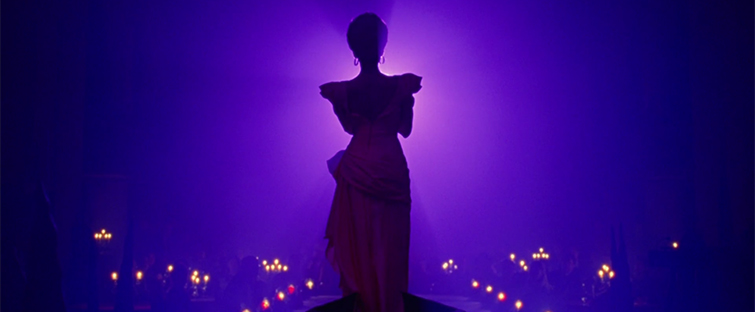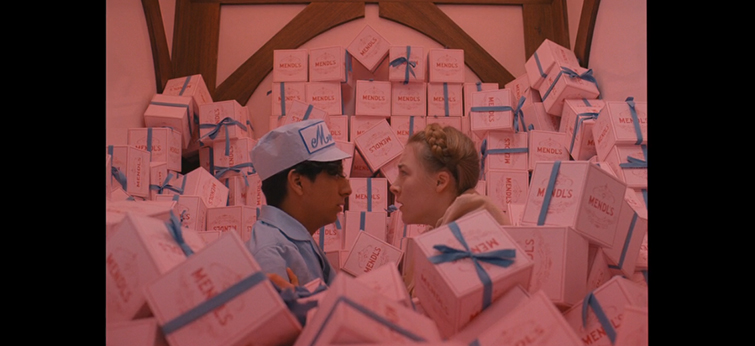
Manipulating the Audience’s Emotions With Color
Sometimes a filmmaker just likes the color red — and sometimes a filmmaker is trying to tap into an audience’s raw emotions to stir a primal reaction to the images on screen.
Movies stir up emotions in ways you might not even realize. The composition of each individual shot in a film is crucial, as are the ideas that come with these shots. Whether it’s a certain aesthetic choice made when coloring, or the wardrobe and objects with which the frame is filled, color can manipulate the emotions of an audience on many different conscience and subconscious levels.
Obviously, colors can mean many different things and can be used in many different ways. There’s no right or wrong way to use blue, green, orange, etc. Finding an appealing and unique way to stir up feelings within your audience through the use of color is the real challenge. Let’s take a look at some of the different color motifs used in films and the emotions these colors bring to the surface.
Red
 Image via A24
Image via A24
The meanings and intent that accompany the color red can vary — but there’s no denying it’s one of the most powerful colors to use on-screen. On one side of the spectrum, red is used as a way to show aggression, violence, and anger. Take the image above. This abrupt moment in Alex Garland’s Ex Machina is when the film takes a 180 and crosses into the realm of sinister. The encompassing red glow signifies a fresh intensity and serves as a cue for the audience to pay attention because something crucial is about to happen.
 Image via MGM
Image via MGM
Stanley Kubrick was a master manipulator thanks to his obsession with color. His most notable and aggressive use of the color red was with Hal in 2001: A Space Odyssey. While inside Hal’s processor core, Dave slowly begins to deactivate the computer. This otherwise boring room is portrayed as a hellish end to a nightmare. This dreadful, inescapable feeling of impending death would be missing if not for Kubrick’s use of the color red.
 Image via Annapurna
Image via Annapurna
On the other side of the spectrum, red often invokes feelings of love and passion. Spike Jonze’s Her is a perfect example of how a film’s entire meaning can be told nonverbally through shot composition and set decoration. The walls, clothes, computer screens — all red. The movie’s hero, Theodore, wears bright red, blue, yellow and white shirts throughout to communicate his emotional state. The entire film is a perfect example of why color theory matters.
Orange
 Image via Netflix
Image via Netflix
Though often associated with warmth, energy, and humor, orange can also register a sense of warning and caution. The ancient religion Confucianism associates orange with transformation. The image above arrives at the tipping point of Beasts of No Nation — our hero is now a completely different person, almost unrecognizable as he trudges through the murky orange trenches.
 Image via Warner Bros
Image via Warner Bros
The entirety of Mad Max: Fury Road has an orange tint that serves to amplify the desolate apocalyptic feeling of the landscape. Barren, hopeless, and endless, the Mars-like texture truly sends the audience to another world as chaos ensues.
Yellow
 Image via Fox Searchlight
Image via Fox Searchlight
Demonstrating feelings of happiness and relaxation (as well as jealousy and betrayal), yellow is as diverse as any other color. Wes Anderson is well-known for his use of yellow and red and has proven to be a master of set design and shot composition. The shot above (from the short Hotel Chevalier) was designed to communicate tranquility and peace — even if the characters struggle to recognize it.
 Image via Fox Searchlight
Image via Fox Searchlight
As Emma Stone’s character belittles Michael Keaton in Birdman, almost every object in this shot carries a yellow tint — from her hair to the chair sitting by her side. This striking yellow overload conveys a sense of danger, judgement and assertiveness. Michael Keaton is torn to existential shreds by the end of this emotional beating, and the room only furthers his embarrassment and shame.
Yellow is such an outlandish color on its own, so an entire shot composed of yellow items will almost always be a direct statement from the director. Deciphering that statement is up to the viewer.
Green
 Image via Filmax
Image via Filmax
In 2004’s The Machinist, mundane and dull everyday repetitiveness is put on full display with dreary colors and lifeless images. A green overtone will always work for the examination of monotony. This can also be seen in The Matrix as well. Pre-red pill, that is.
Green also has the power to breathe new life into characters and audiences. Luscious greenery and earthly tones give off a sense of new beginnings and survival. At the conclusion of Gravity, Sandra Bullock emerges from the water to find a lush, brightly colored, oxygen-filled landscape that immediately signifies new life.
 Image via WarnerBros
Image via WarnerBros
Jacob T. Swinney recently released a video essay that explores the ways the Coen Brothers use the color green. The video is highly entertaining and provides some excellent insight into how much thought goes into each and every shot of their films.
Blue
 Image via WarnerBros.
Image via WarnerBros.
Faithfulness, loyalty, and childlike wonder shine throughout the Jeff Nichols sci-fi chase movie, Midnight Special. The main character is one-of-a kind in every sense of the word and is covered in blue from head to toe. As used here, blue, most often associated with positive thoughts, portrays innocence and purity.
 Image via Miramax Vantage
Image via Miramax Vantage
Sticking out like a sore thumb from the rest of the dirty, beige, dry colors of Paul Thomas Anderson’s There Will Be Blood, the heavy scene above finds the central character confronted with a harsh reality. His solitude literally surrounds him in this shot as he realizes just how alone he really is.
 Image via Radius
Image via Radius
In Only God Forgives, the central character’s detachment from reality grows as the film trudges forward. Separating from the all encompassing red that fills most of the film’s running time, Ryan Gosling is consumed in this blue light, isolated away from reality, sanity, and every other character in the film. A dark, unfamiliar scheme (blue in this case) that stands out from the rest of the film is a perfect way to demonstrate a character’s detachment.
Purple
 Image via Warner Bros
Image via Warner Bros
Speaking of Ryan Gosling, his directorial debut, Lost River, features one of the most seductive and alluring character entrances in recent memory. This temptress is engulfed by a purple backlight, exposing her sultry silhouette and immediately notifying the audience of her mysterious nature. Purple is often associated with ambiguity and extravagance. Both of these themes are featured in numerous ways throughout this film (slightly NSFW).
 Image via Marvel
Image via Marvel
The rare appeal of purple was exploited extremely well in 2014’s Guardians of the Galaxy — and other major blockbusters are following suit. Purple is mysterious and rare (much like the film’s purple Infinity Stone McGuffin), but using it appropriately can yield striking imagery that sticks with your audience for a long time.
Pink
 Image via Fox Searchlight
Image via Fox Searchlight
The soft pink motif for the pastry shop in Wes Anderson’s The Grand Budapest Hotel is more than it seems. The childlike romance between the two characters shown above, each wearing archetypal colors, comes to fruition in this exact shot. Surrounded by pink boxes, their innocent love blossoms. Wes Anderson’s compelling use of color is definitely worth exploring.
 Image via Radius
Image via Radius
In the breakout 2015 horror film, It Follows, we’re introduced to the main character who dons a pink outfit in a room filled with pink. The decision to decorate the room and character as such precedes what “follows” later in the film. Pink represents her innocence and purity. After a frightening turn of events, her innocence is lost — and the pink outfit and lighting disappear simultaneously.
Violet/magenta/red/light pink — all of these can be associated with romance, love, and passion. Though they can carry other meanings and associations, the general understanding and consensus recognizes these as love-related.
 Image via Universal
Image via Universal
The decisions you make as a filmmaker to include or not include certain colors in your film are entirely up to you. There’s no right or wrong way to convey sadness, happiness, or fear. However, there are subconscious levels of primal emotion in your audience that can be triggered if color is used correctly. Like any decision you make in production, make sure it serves the story and engages your audience.
What are your favorite uses of color in film? Share in the comments below.




